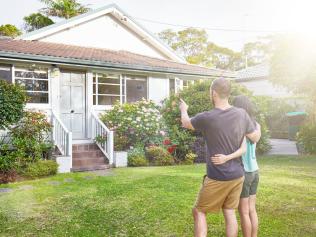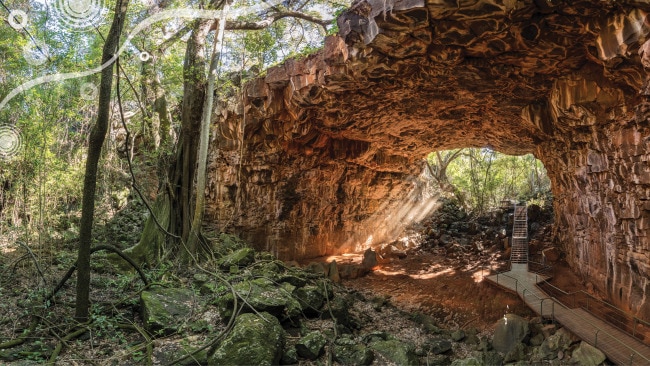Is this why first home buyers are struggling to get into the market?
Owning a home may be the great Australian dream, but do first home buyers need to be brought back down to Earth? New data reveals buyers prioritise location over affordability, which could be the reason so many struggle to get into the market

Owning a home may be the great Australian dream, but do first home buyers need to be brought back down to Earth? New data reveals buyers prioritise location over affordability, which could be the reason so many struggle to get into the market
QUEENSLANDERS are adhering to the old real estate adage of ‘location, location, location’ by putting it above all else, even affordability, according to recent research.
The Suncorp Home Index Survey found 38 per cent of those living in the Sunshine State indicated location as the main factor in choosing where to live, compared to just 28 per cent for affordability.
But, experts say it shouldn’t trump being realistic in what you can afford.
Suncorp Head of Customer Solutions Samantha Miller says homebuyers usually have a dream of where and what they want to buy, but it often changes quickly when they start to crunch the numbers.
Compromises are sometimes necessary, she says, with buyers either compromising on location, by looking at surrounding suburbs, or property type, by choosing a smaller home in the location they want to be in.
For families, she says, this might be buying a smaller house next to a park rather than a house with a huge backyard.
“We also see trends of young people going into studio apartments or one-bedroom apartments, compromising space for location,” Miller says.
For some homebuyers, prioritising location over affordability can hamper their ability to get into the market.
The survey found the biggest barriers identified by Australian first homebuyers in getting into the market related to affordability, with 60 per cent saying a key fear was being unable to afford the home they want, and 53 per cent indicating it was being unable to afford to live in the area they want. Fifty-one per cent said they also fear not having a large enough deposit.
Rather than sacrificing location for affordability or vice versa, PRDnationwide National Research Manager Dr Asti Mardiasmo believes buyers can have a mixture of both, if they make objective, rather than subjective, choices.
PRDnationwide has identified Brisbane hotspots that are considered to be both affordable and liveable, including Algester, Bracken Ridge and Geebung for houses and Algester, Northgate and Parkinson for units.
“When we talk liveability we use very basic concepts - low crime rates, low unemployment rate and amenities such as hospitals, schools and shops within five kilometres,” she says. “We also only nominate suburbs that are within 20 kilometres of the CBD.
“Affordability is key, as at present our interest rates are very low and there is cheap money around, all of which are temporary.
“Our mortgage debt-to-income ratio is already extremely high and we want to ensure that there is home ownership sustainability – not one where the home owner can afford it now but then experiences financial distress the second rates go up.”
Hassan says Australians – especially first home buyers – need to buy within their means to ensure they don’t set themselves up for financial failure.
Research from finder.com.au shows the average size of a first home buyer loan has hit an all-time high, reaching $349,800 in June 2018, up nine per cent from a year prior, according to Australian Bureau of Statistics data.
“First home buyers are borrowing on average $32,000 more per home loan today than they were two years ago when the RBA first cut the official cash rate to 1.5 per cent,” Hassan says.
“As a general rule of thumb, buyers need to ensure they’re committing no more than 30 per cent of their income towards mortgage repayments to avoid experiencing mortgage stress.
“While home loan rates are historically low in the current climate, all buyers should factor in future rate rises by allowing a buffer of two to three per cent on top of their current rate.”
Hassan says it’s also taking longer for prospective property owners to save a deposit.
In Queensland buyers need an average of $75,950 for a 20% on a $303,800 loan, which is the average first home buyer home loan size, according to finder.com.au.
In South East Queensland it will take just under five years to save a deposit for the Gold Coast and Sunshine Coast, 4.2 years for Brisbane and under four years for the Scenic Rim, Redland, Moreton Bay, Logan, Somerset and Ipswich.
“The research shows the Central Highlights, Mackay and Townsville areas will take homebuyers the least amount of time to come up with a deposit, which is largely due to the lower average house price,” adds Hassan.
Miller says that the first thing first home buyers need to do is find out what their borrowing power actually is by looking at repayment calculators and talking to a lender. This is especially the case in the current lending climate, with greater restrictions and more stringent tests to determine whether people can service a loan.
“People then need to process that reality and decide what lifestyle changes they can make to save more to get into the location they want,” Miller advises.
She adds would-be buyers should also consider bucketing their money into different savings accounts and educate themselves, including through the use of apps providing valuations, and home buying guides.
It’s important for young people to buy something they can afford quite easily, adds REA Group Chief Economist Nerida Conisbee, keeping in mind that first homes are not usually “forever homes”.
“Realistically people will trade up over time, so early on when you’re young it does pay to focus more on something that isn’t going to stretch the budget too much,” she says.
“Over time you build equity in your home and most people’s wages increase over time, which helps them to trade up.”
But since Brisbane is far more affordable than other states, particularly Sydney and Melbourne, buyers are more able to prioritise location over affordability, adds Conisbee.
“People can more likely live where they want to live, whereas in Sydney, when the median in some highly desirable suburbs is $3-4 million dollars, it’s just not possible,” she says.
Originally published as Is this why first home buyers are struggling to get into the market?


